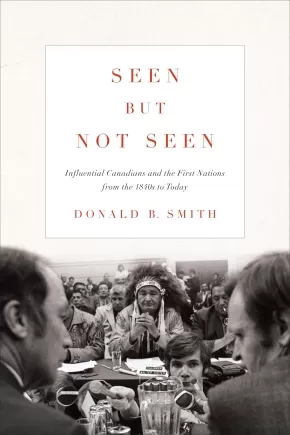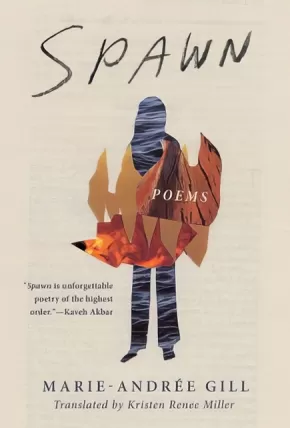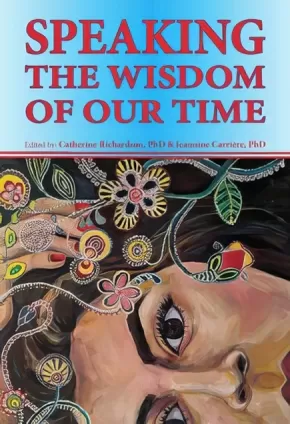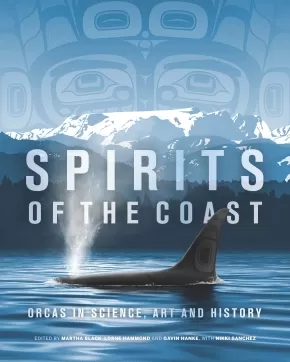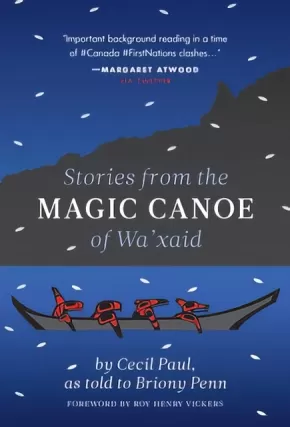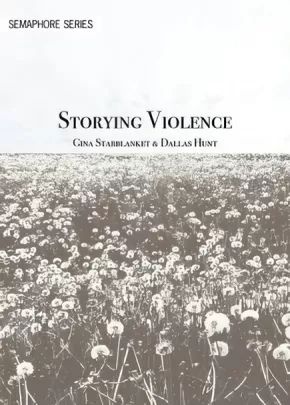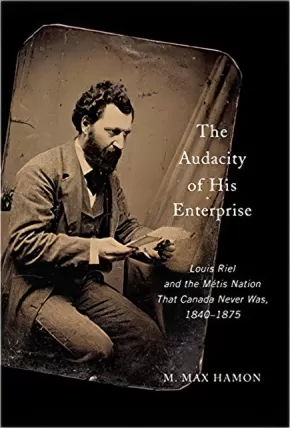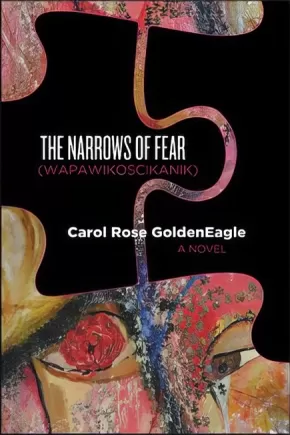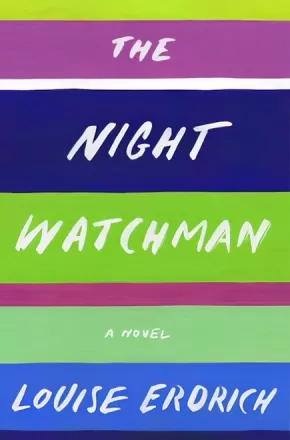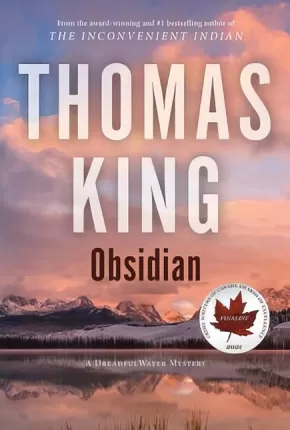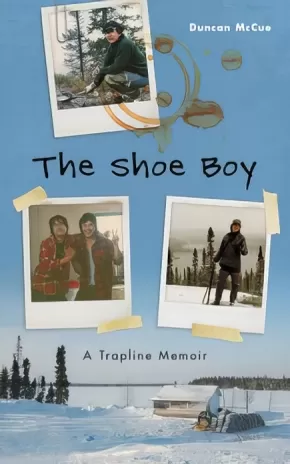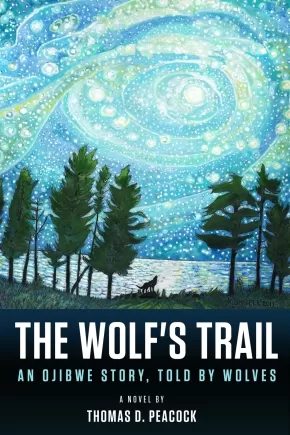
Adult Book
841
-
855
of
1380 Results;
Sort By
Go To
of 92
Seen but Not Seen: Influential Canadians and the First Nations from the 1840s to Today
$32.95
Format:
Paperback
Text Content Territories:
Indigenous Canadian;
Grade Levels: University/College;
ISBN / Barcode: 9781442627703
Synopsis:
Synopsis:
Throughout the nineteenth and most of the twentieth century, the majority of Canadians argued that European "civilization" must replace Indigenous culture. The ultimate objective was assimilation into the dominant society.
Seen but Not Seen explores the history of Indigenous marginalization and why non-Indigenous Canadians failed to recognize Indigenous societies and cultures as worthy of respect. Approaching the issue biographically, Donald B. Smith presents the commentaries of sixteen influential Canadians – including John A. Macdonald, George Grant, and Emily Carr – who spoke extensively on Indigenous subjects. Supported by documentary records spanning over nearly two centuries, Seen but Not Seen covers fresh ground in the history of settler-Indigenous relations.
Reviews
“The quality of scholarship is very high. Donald B. Smith is meticulous, building on decades of extensive and careful research and thoroughly documenting his writings and conclusions.” — Jennifer S.H. Brown, University of Winnipeg
“Offering revelation after revelation, each indicting the rich, privileged, and elite society of Canada, shackled in their own times, Donald B. Smith skillfully and poignantly reveals stories illuminating the truth. No celebrations here, and nowhere to hide as one ponders and copes with what could have been. Miigwech (thank you), Donald, for elevating us to our stage in time where we can own the imperative that yes, we can!” — Dean M. Jacobs, Walpole Island First Nation
“Donald B. Smith’s Seen but Not Seen could not possibly be more timely – and more welcome. This is the lifework of one of the country’s greatest historians. Canadians will see themselves in this book; they will not like much of what they see, but they will finish with a sense that reconciliation with First Nations is possible – so long as we first face the truths. These truths are here, in a remarkable work that covers everything from a re-evaluated John A. Macdonald to the COVID-19 pandemic. It is peopled with remarkable characters, many admirable, some despicable – Duncan Campbell Scott, John McDougall, Crowfoot, Long Lance, Kathleen Coburn, Emily Carr, Pauline Johnson, Harold Cardinal – and is wonderfully illustrated with archival photographs and maps.” — Roy MacGregor, columnist and feature writer for The Globe and Mail
“Impeccably researched, much like everything Donald B. Smith has written over his impressive career. This work is a gift from an historian on the cusp of retirement, who shares his archive to help us understand the history of Canada and outlines the gaps left for future, especially Indigenous, researchers to tackle.” — Deanna Reder, Simon Fraser University
Educator Information
Table of Contents
Acknowledgments
List of Illustrations
Maps
Prologue
Note on Terminology
1. John A. Macdonald and the “Indians”
2. Rev. John McDougall and the Stoney Nakoda
3. George Grant: An English Canadian Public Intellectual and the “Indians”
4. Chancellor John A. Boyd and a Fellow Georgian Bay Cottager, Kathleen Coburn
5. Duncan Campbell Scott: Determined Assimilationist
6. Paul A.W. Wallace and the “White Roots of Peace”
7. Quebec Viewpoints: From Lionel Groulx to Jacques Rousseau
8. Attitudes on the Pacific Coast: Franz Boas, Emily Carr, and Maisie Hurley
9. Alberta Perspectives: Long Lance, John Laurie, Hugh Dempsey, and Harold Cardinal
Epilogue: The First Nations and Canada’s Conscience
Bibliography
Notes
Index
Additional Information
488 pages | 6.00" x 9.00"
Spawn
$18.00
Format:
Paperback
Text Content Territories:
Indigenous Canadian; First Nations; Innu (Montagnais-Naskapi); Mashteuiatsh (Pekuakamiulnuatsh);
Grade Levels: 12; University/College;
ISBN / Barcode: 9781771665971
Synopsis:
Synopsis:
Spawn is a braided collection of brief, untitled poems, a coming-of-age lyric set in the Mashteuiatsh Reserve on the shores of Lake Piekuakami (Saint-Jean) in Quebec. Undeniably political, Marie-Andrée Gill's poems ask: How can one reclaim a narrative that has been confiscated and distorted by colonizers?
The poet's young avatar reaches new levels on Nintendo, stays up too late online, wakes to her period on class photo day, and carves her lovers' names into every surface imaginable. Encompassing twenty-first-century imperialism, coercive assimilation, and 90s-kid culture, the collection is threaded with the speaker's desires, her searching: for fresh water to "take the edge off," for a "habitable word," for sex. For her "true north"—her voice and her identity.
Like the life cycle of the ouananiche that frames this collection, the speaker's journey is cyclical; immersed in teenage moments of confusion and life on the reserve, she retraces her scars to let in what light she can, and perhaps in the end discover what to "make of herself".
Reviews
"Spawn is an epic journey that follows the ouananiche in their steadfast ability to hold: rigid, shimmering, hardened to the frigid waters of winter, in all of its capacities of and for whiteness. Here, poems summon a spawn of wonderworking dreams: 'a woman risen up from all these winter worlds, heaped with ice [and] ready to start again'." —Joshua Whitehead, author of Jonny Appleseed
"Spawn is unforgettable poetry of the highest order." —Kaveh Akbar, author of Calling a Wolf a Wolf
"Gill's poems are like small treasures clutched in buried tree roots, preserving 'the chalky veins' of ancestral memory pulsing just below our modern hustle." —Kiki Petrosino, author of White Blood
Educator Information
Recommended in the Canadian Indigenous Books for Schools 2020/2021 resource list for grade 12 for English Language Arts and Social Justice.
Caution: Some foul language, sexual and violent content.
Additional Information
96 pages | 5.25" x 7.75" | Translated by Kristen Renee Miller
Speaking the Wisdom of Our Time (4 in Stock, Out of Print)
$33.00
Editors:
Format:
Paperback
Text Content Territories:
Indigenous Canadian; Métis;
Grade Levels: University/College;
ISBN / Barcode: 9781926476391
Synopsis:
Synopsis:
Within this volume Métis stories of strength, courage and resistance are shared. Each of the chapters describe a need to re-examine how social policy is formulated and have impacted our relatives and continue to impact our children. Today we are faced with particular challenges on the planet and in our communities. We have stretched Mother Earth to the limits of her capacity and she is fighting back. As someone said, ‘we need the Earth, but the Earth does not need us’. One of the invitations of this time is to reduce our footprint, our consumption and to restore balance and harmony between mankind and the environment.
Reviews
"This powerful collection revitalizes Métis teachings, history and perspectives and will inform social policy and public understandings of Métis identities, pedagogies, health, governance, and spirituality." - Sarah Wright Cardinal
"This book represents a remarkable collection of writing that reflects profound Métis knowledge and wisdom drawing on the insights of both historical and contemporary knowledge keepers. The result is a much needed and valuable resource to understanding Métis culture ranging from values to identity, land relationships, law and political acuity. It is an insightful and powerful tribute to Métis peoples and is certain to enhance your knowledge and understanding." - Gwendolyn Gosek
"This important book, with its exclusive focus on the work of women and two-spirit people, celebrates the unique wisdom and perspective of Métis scholars and communities. Its blend of personal narratives and culturally-connected research shows clearly why Métis voices must be amplified in academia and beyond." - Lindsay Morcom
Additional Information
168 pages | 6.00" x 9.00"
Spirits of the Coast: Orcas in Science, Art and History
$29.95
Editors:
Format:
Hardcover
Text Content Territories:
Indigenous Canadian;
ISBN / Barcode: 9780772677686
Synopsis:
Synopsis:
An insightful collection exploring the plight, past and promise of the orca, powerful symbol of BC’s wild coast and apex predator of all oceans. Spirits of the Coast brings together the work of marine biologists, Indigenous knowledge keepers, poets, artists and storytellers, united by their enchantment with the orca. Long feared in Western cultures as “killer whales,” and respected and honoured by Indigenous cultures as friends, family or benefactors, orcas are complex social beings with culture and language of their own. With contributors ranging from Briony Penn to David Suzuki, Gary Geddes and Michael Nicoll Yahgulanaas, this collection brings together diverse voices, young and old, to explore the magic, myths, and ecology of orcas. A literary and visual journey through past and possibility, Spirits of the Coast illustrates how these enigmatic animals have shaped us as much as our actions have impacted them, and provokes the reader to imagine the shape of our shared future.
Educator Information
Includes Indigenous and non-Indigenous contributions.
Recommended in the Canadian Indigenous Books for Schools 2020/2021 resource list for grades 9 to 12 for English Language Arts, Law, Social Studies, Social Justice, Science.
Additional Information
192 pages | 8.00" x 10.00"
Stories from the Magic Canoe of Wa'xaid (PB)
$25.00
Format:
Paperback
Text Content Territories:
Indigenous Canadian; First Nations; Haisla (Kitamaat); Xenaksiala (Henaksiala);
ISBN / Barcode: 9781771603379
Synopsis:
Synopsis:
A remarkable and profound collection of reflections by one of North America’s most important Indigenous leaders.
My name is Wa’xaid, given to me by my people. ‘Wa’ is ‘the river’, ‘Xaid’ is ‘good’ – good river. Sometimes the river is not good. I am a Xenaksiala, I am from the Killer Whale Clan. I would like to walk with you in Xenaksiala lands. Where I will take you is the place of my birth. They call it the Kitlope. It is called Xesdu’wäxw (Huschduwaschdu) for ‘blue, milky, glacial water’. Our destination is what I would like to talk about, and a boat – I call it my magic canoe. It is a magical canoe because there is room for everyone who wants to come into it to paddle together. The currents against it are very strong but I believe we can reach that destination and this is the reason for our survival. —Cecil Paul
Who better to tell the narrative of our times about the restoration of land and culture than Wa’xaid (the good river), or Cecil Paul, a Xenaksiala elder who pursued both in his ancestral home, the Kitlope — now the largest protected unlogged temperate rainforest left on the planet. Paul’s cultural teachings are more relevant today than ever in the face of environmental threats, climate change and social unrest, while his personal stories of loss from residential schools, industrialization and theft of cultural property (the world-renowned Gps’golox pole) put a human face to the survivors of this particular brand of genocide.
Told in Cecil Paul’s singular, vernacular voice, Stories from the Magic Canoe spans a lifetime of experience, suffering and survival. This beautifully produced volume is in Cecil’s own words, as told to Briony Penn and other friends, and has been meticulously transcribed. Along with Penn’s biography of Cecil Paul, Following the Good River, Stories from the Magic Canoe provides a valuable documented history of a generation that continues to deal with the impacts of brutal colonization and environmental change at the hands of politicians, industrialists and those who willingly ignore the power of ancestral lands and traditional knowledge.
Reviews
“The Magic Canoe brings peace to one’s soul. It is a warm wind moving our hearts. Wa’xaid takes us on a journey that regenerates and empowers us. T’ismista, the stone hunter, looks down on the Magic Canoe and reminds us to listen to storytellers like Cecil Paul. This is a story for the family of man; we are all in the canoe together and our stories need to be shared with each other.” – Roy Henry Vickers
Educator Information
Recommended in the Canadian Indigenous Books for Schools 2019-2020 resource list, as well as the 2020-2021 resource list, for grades 9 to 12 for English Language Arts, Social Studies, and Science.
Additional Information
224 pages | 5.00" x 7.00" | Paperback
Storying Violence: Unravelling Colonial Narratives in the Stanley Trial
$15.00
Format:
Paperback
Text Content Territories:
Indigenous Canadian; First Nations; Cree (Nehiyawak);
Reading Level: N/A
ISBN / Barcode: 9781927886373
Synopsis:
Synopsis:
In August of 2016, Cree youth Colten Boushie was shot dead by Saskatchewan farmer Gerald Stanley. Using colonial and socio-political narratives that underlie white rural settler life, the authors position the death of Boushie and trial of Stanley in relation to Indigenous histories and experiences in Saskatchewan. They point to the Stanley case as just one instance of Indigenous peoples' presence being seen as a threat to settler-colonial security, then used to sanction the exclusion, violent treatment, and death of Indigenous peoples and communities.
Additional Information
120 pages | 5.00" x 7.00"
Teaching Fairly in an Unfair World 2nd Edition
$28.95
Format:
Paperback
ISBN / Barcode: 9781551383439
Synopsis:
Synopsis:
An open-ended approach to giving students voice and challenging them to think critically about social justice issues.
This era of so-called fake news demands a deeper curriculum that questions the inconsistencies of facts and opinions in various texts and images. This timely new edition of a groundbreaking book offers students opportunities to connect with social justice issues through inventive language exploration and the active examination of all forms of media. It encourages teachers to evaluate their core teaching beliefs and recognize the realities of their students’ lives to develop a richer understanding of our complex world. A glossary of more than 50 strategies, along with reproducible pages for easy classroom use, complements this essential resource.
Educator Information
This edition has been updated to reflect current political, social, and cultural challenges.
This book will help students understand what is fair for them and others. It features engaging ways to connect classrooms to social justice issues through collaboration, language instruction and responding to media.
Includes detailed mini-lessons that have inspired many classrooms.
Keywords/Subjects: inclusive classrooms, inclusivity, voice and choice, critical thinking, thinking skills, media awareness, social justice, empathy, understanding, comprehension, classroom strategies, fake news, facts, inconsistency, reporting, issues, evaluation, teachers, education.
Additional Information
160 pages | 8.38" x 10.88" | 2nd Edition
Teaching Tough Topics: How Do I Use Children's Literature to Build a Deeper Understanding of Social Justice, Equity, and Diversity?
$28.95
Format:
Paperback
Text Content Territories:
Indigenous;
ISBN / Barcode: 9781551383415
Synopsis:
Synopsis:
Teaching Tough Topics shows teachers how to lead students to become caring citizens as they read and respond to quality children’s literature. It focuses on topics that can be challenging or sensitive yet significant for building an understanding of social justice, diversity and equity. Racism, homophobia, bullying, religious intolerance, poverty, and physical and mental challenges are just some of the themes explored. The book is rooted in the belief that, by using picture books, novels, poetry, and nonfiction, teachers can enrich learning with compassion and empathy as students make connections to texts, to others and to the world.
Educator Information
Teaching Tough Topics is a timely approach to a better understanding of diversity, equity and social justice with clear instructions on how to implement a range of instructional strategies at different grade levels.
This book offers a valuable overview of tough topics including bullying, poverty, homophobia, gender, racism, death, Indigenous culture, physical and mental challenges, and religious intolerance.
Includes a comprehensive, up-to-date book list including picture books, novels, poetry and nonfiction titles that can be used to explore each topic.
Contains some Indigenous content.
Additional Information
144 pages | 8.38" x 10.88"
The Audacity of His Enterprise: Louis Riel and the Metis Nation That Canada Never Was, 1840-1875
$45.95
Format:
Hardcover
Text Content Territories:
Indigenous Canadian; Métis;
ISBN / Barcode: 9780773559370
Synopsis:
Synopsis:
Louis Riel (1844-1885) was an iconic figure in Canadian history best known for his roles in the Red River Resistance of 1869 and the Northwest Resistance of 1885. A political leader of the Métis people of the Canadian Prairies, Riel is often portrayed as a rebel. Reconstructing his experiences in the Northwest, Quebec, and the worlds in between, Max Hamon revisits Riel's life through his own eyes, illuminating how he and the Métis were much more involved in state-making than historians have previously acknowledged. Questioning the drama of resistance, The Audacity of His Enterprise highlights Riel's part in the negotiations, petition claims, and legal battles that led to the formation of the state from the bottom up. Hamon examines Riel's early successes and his participation in the crafting of a new political environment in the Northwest and Canada. Arguing that Riel viewed the Métis as a distinct people, not caught between worlds, the book demonstrates Riel's attempts to integrate multiple perspectives - Indigenous, French-Canadian, American, and British - into a new political environment. Choosing to end the book in 1875, at the pinnacle of Riel's successful career as a political leader, rather than at his death in 1885, Hamon sets out to recover Riel's agency, intentions, and imagination, all of which have until now been displaced by colonial narratives and the shadow of his execution. Revisiting the Red River Resistance on its 150th anniversary, The Audacity of His Enterprise offers a new view of Riel's life and a rethinking of the history of colonialism.
Reviews
"The Audacity of His Enterprise is a sophisticated and humanizing biography of an iconic figure in Canadian history set within the context of his times." Jean Barman, University of British Columbia and author of Iroquois in the West
Additional Information
478 pages | 6.00" x 9.00" | 12 Photos
The Krillian Key: Salamander Run
$24.00
Format:
Paperback
Text Content Territories:
Indigenous;
ISBN / Barcode: 9781928120216
Synopsis:
Synopsis:
“My million years of immortality have barely begun…”
Pursued by warring human/alien hybrids, the immortal Kyrill, also known as Salamander, is the key to a prison forged by the seven gods of creation. While one of the warring factions moves to protect him, the other seeks to use him to open the prison. Kyrill’s story unfolds in a war-ravaged dystopia where his people, Indigenous North Americans, are space pirates who control the solar system’s spaceways. The Krillian Key: Salamander Run is a fun, sassy and fast-paced graphic novel set in the post-apocalyptic future of Neo-New York circa 2242, with flashbacks to modern-day Canada.
Additional Information
200 pages | 5.50" x 8.50" | black and white illustrations
The Narrows of Fear (Wapawikoscikanik)
$22.95
Format:
Paperback
Text Content Territories:
Indigenous Canadian; First Nations; Cree (Nehiyawak);
Reading Level: N/A
ISBN / Barcode: 9781771337892
Synopsis:
Synopsis:
The Narrows of Fear (Wapawikoscikanik) weaves the stories of a group of women committed to helping one another. Despite abuse experienced by some, both in their own community and in residential schools, these women learn to celebrate their culture, its stories, its dancing, its drums, and its elders. Principal of these elders is Nina, the advisor at the women's shelter. With the help of Sandy and Charlene, Nina uses Indigenous practices to heal the traumatized Mary Ann. This is a powerful novel; sometimes brutally violent, sometimes healing, sometimes mythical, and always deeply respectful of the Indigenous culture at its heart.
Reviews
"Strong women united in friendship and solidarity are an unstoppable force. These characters will stay with you. This story is haunting in all the good ways." -Katherena Vermette, author of The Break
"Even though fiction, Narrows of Fear (Wapawikoscikanik) is an authentic telling of Truth as its characters wrestle with the trauma of inter-generational violence and abuse rooted in the colonization of Indigenous peoples. It is also an honouring of language, of culture, of dreams, and of Spirit. A story of courage, of hope and healing, it is a welcome addition to the widening and strengthening of Circle for all. Hiy Hiy Osawa Mikisew Iskwew." -Lorrie Potvin, author of First Gear: A Motorcycle Memoir, and the forthcoming, Horses in the Sand
"Carol Rose GoldenEagle's novel, The Narrows of Fear (Wapawikoscikanik) is a powerful and compelling novel about Aboriginal women reclaiming and celebrating our Indigenous culture, traditions, and ways of knowing. Collective knowledge can heal and strengthen humanity when women are given space to do so. A must-read for all women!"-Beverly Little Thunder, author of One Bead at a Time: A Memoir
Additional Information
240 pages | 5.50" x 8.25" | Paperback
The Night Watchman (HC) (1 in Stock)
$35.99
Format:
Hardcover
Text Content Territories:
Indigenous American; Native American; Anishinaabeg; Ojibwe (Chippewa);
ISBN / Barcode: 9780062671189
Synopsis:
Synopsis:
Based on the extraordinary life of National Book Award-winning author Louise Erdrich’s grandfather who worked as a night watchman and carried the fight against Native dispossession from rural North Dakota all the way to Washington, D.C., this powerful novel explores themes of love and death with lightness and gravity and unfolds with the elegant prose, sly humor, and depth of feeling of a master craftsman.
Thomas Wazhashk is the night watchman at the jewel bearing plant, the first factory located near the Turtle Mountain Reservation in rural North Dakota. He is also a Chippewa Council member who is trying to understand the consequences of a new “emancipation” bill on its way to the floor of the United States Congress. It is 1953 and he and the other council members know the bill isn’t about freedom; Congress is fed up with Indians. The bill is a “termination” that threatens the rights of Native Americans to their land and their very identity. How can the government abandon treaties made in good faith with Native Americans “for as long as the grasses shall grow, and the rivers run”?
Since graduating high school, Pixie Paranteau has insisted that everyone call her Patrice. Unlike most of the girls on the reservation, Patrice, the class valedictorian, has no desire to wear herself down with a husband and kids. She makes jewel bearings at the plant, a job that barely pays her enough to support her mother and brother. Patrice’s shameful alcoholic father returns home sporadically to terrorize his wife and children and bully her for money. But Patrice needs every penny to follow her beloved older sister, Vera, who moved to the big city of Minneapolis. Vera may have disappeared; she hasn’t been in touch in months, and is rumored to have had a baby. Determined to find Vera and her child, Patrice makes a fateful trip to Minnesota that introduces her to unexpected forms of exploitation and violence, and endangers her life.
Thomas and Patrice live in this impoverished reservation community along with young Chippewa boxer Wood Mountain and his mother Juggie Blue, her niece and Patrice’s best friend Valentine, and Stack Barnes, the white high school math teacher and boxing coach who is hopelessly in love with Patrice.
In The Night Watchman, Louise Erdrich creates a fictional world populated with memorable characters who are forced to grapple with the worst and best impulses of human nature. Illuminating the loves and lives, the desires and ambitions of these characters with compassion, wit, and intelligence, The Night Watchman is a majestic work of fiction from this revered cultural treasure.
Awards
- 2021 Pulitzer Prize for Fiction
Additional Information
464 Pages | 6" x 9"
|
|
The Obsidian Murders
$22.99
Format:
Paperback
Text Content Territories:
Indigenous American; Native American; Cherokee;
Grade Levels: 12; University/College;
ISBN / Barcode: 9781443455206
Synopsis:
Synopsis:
From the award-winning and #1 bestselling author of The Back of the Turtle; Green Grass, Running Water and The Inconvenient Indian
Thumps DreadfulWater’s world is turned upside down when Nina Maslow, the producer of a true-crime reality-TV show, turns up dead after working on a cold case that Thumps has spent years trying to forget. What’s more, someone seems set on taunting Thumps, leaving reminders of the Obsidian murder case around town. Is it possible that the elusive serial killer who murdered his girlfriend and her daughter all those years ago has resurfaced in Chinook? Or is this the work of a copycat looking to mess with Thumps by stirring up memories from his past?
Dragged back into a case that has haunted him for years, Thumps DreadfulWater is determined to solve the mystery of the Obsidian murders. But as he works the case, he begins to realize just how dangerous the person he is dealing with is—and that he might be the next target.
Thumps DreadfulWater, the sly, wry, reluctant investigator of Cold Skies and A Matter of Malice, returns in another irresistible mystery that only Thomas King could create.
Series Information
This book is from the DreadfulWater Mystery series, a mystery/detective series from Thomas King.
Books in this series include:
- Dreadful Water
- The Red Power Murders
- Cold Skies
- A Matter of Malice
- The Obsidian Murders
- Deep House
- Double Eagle
- Black Ice
Additional Information
240 pages | 6.00" x 9.00"
The Shoe Boy: A Trapline Memoir
$19.95
Format:
Paperback
Text Content Territories:
Indigenous Canadian; First Nations; Anishinaabeg; Cree (Nehiyawak); James Bay Cree;
ISBN / Barcode: 9780774880572
Synopsis:
Synopsis:
At the age of seventeen, an Anishinabe boy who was raised in the south joined a James Bay Cree family in a one-room hunting cabin in the isolated wilderness of northern Quebec. In the five months that followed, he learned a way of life on the land with which few are familiar, where the daily focus is on the necessities of life, and where both skill and finesse are required for self-sufficiency.
In The Shoe Boy, that boy – Duncan McCue – takes us on an evocative journey that explores the hopeful confusion of the teenage years, entwined with the challenges and culture shock of coming from a mixed-race family and moving to the unfamiliar North. As he reflects on his search for his own personal identity, he illustrates the relationship Indigenous peoples have with their lands, and the challenges urban Indigenous people face when they seek to reconnect to traditional lifestyles.
The result is a contemplative, honest, and unexpected coming-of-age memoir set in the context of the Cree struggle to protect their way of life, after massive hydro-electric projects forever altered the landscape they know as Eeyou Istchee.
This memoir will be of interest to readers of all ages who want to know more about the interplay of traditional and contemporary Indigenous lifestyles, the challenges of identity for First Nations youth, and the relationship Indigenous peoples have with their land.
Reviews
"Frank, funny and evocative, The Shoe Boy deftly entwines the challenges of identity for First Nations youth, the sexual frustration and hopeful confusion of the teenage years, and the realities of living in an enduring state of culture shock." — CBC Books
"The Shoe Boy is a valuable read and will enrich anyone who tunes in to CBC Radio One on Sunday afternoons, as McCue establishes his voice in the conversation of Canada.— Thomas Billingsley, Globe and Mail
Educator Information
Related Topics: Biography, Memoirs, and Letters; Canadian Studies; Indigenous Studies.
Recommended in the Canadian Indigenous Books for Schools 2020/2021 resource list for grades 9 to 12 for English Language Arts and Social Studies.
Caution: mature language, references to sex, alcohol, and suicide.
Additional Information
88 pages | 5.00" x 8.00"
The Wolf's Trail: An Ojibwe Story, Told by Wolves
$25.50
Format:
Paperback
Text Content Territories:
Indigenous American; Native American; Anishinaabeg; Ojibwe (Chippewa);
ISBN / Barcode: 9781513645629
Synopsis:
Synopsis:
Additional Information
180 pages | 6.00" x 9.00"
Sort By
Go To
of 92

